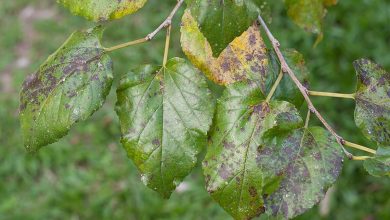Chinese Jasmine: [Cultivation, Irrigation, Care, Pests and Diseases]
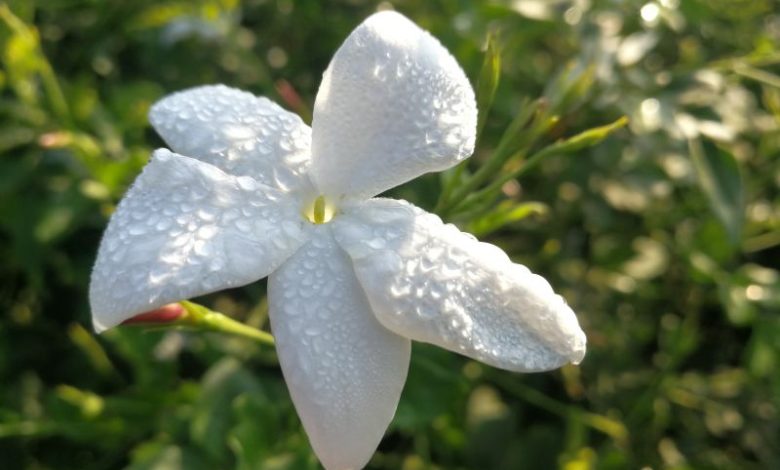
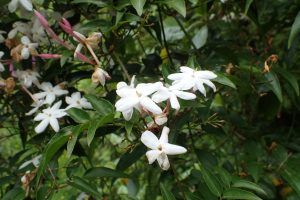 Chinese jasmine is a climbing plant that emits an exquisite floral perfume and is capable of decorating an environment with great elegance.
Chinese jasmine is a climbing plant that emits an exquisite floral perfume and is capable of decorating an environment with great elegance.
Initially, Chinese jasmine buds are a pinkish hue but this changes to a perfect white when the flowers arrive.
It behaves as a perennial plant in places where the temperature is warm and constant throughout the year.In sites with seasons and winters, it loses its leaves and produces new ones the following spring.
Would you like to enjoy this beautiful species at home? Write down all the data that we bring you below so that you do it safely.
Important points when planting Chinese jasmine
- When? In spring.
- Where? In a lighted space with at least partial shade.
- How do we prepare the land? Soil with good drainage, nourished and not very compact.
- How should we water? Moderate, drip.
- How often do you have to water? In summer 3 times a week and in winter 1 time a week.
- What care do you need? Annual pruning, fertilization rich in phosphorus, being 3 meters from other plants.
- What pests and diseases does it have? Aphids, cochineal, mildew and root rot.
When to plant a Chinese jasmine?
During spring is the correct time for Chinese jasmine to plant and start its process correctly.
Where to plant a Chinese jasmine?
Chinese jasmine is not picky about sun exposure. You can receive rays directly without inconvenience or also take advantage of a partial shade.
The most common is to place it directly in the garden soil, but it is also possible to plant it in a pot and guide it through a fence if it is located on a terrace so that it can grow.
How to prepare the land?
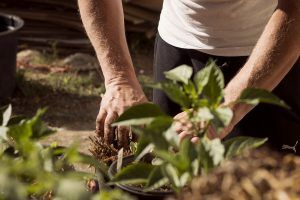 The first point that we will have to ensure to have a Chinese jasmine in excellent condition is the drainage .
The first point that we will have to ensure to have a Chinese jasmine in excellent condition is the drainage .
If the chosen land does not have this characteristic, it will be possible to improve it by adding a component that helps it, such as ground coconut fiber.
The land must have a high level of nutrition that we will achieve by adding an amount of organic fertilizer, such as homemade compost, before proceeding with planting.
The idea is to place the necessary amount and stir with the soil to mix well and receive the benefit from all points.It’s best to skip overly compacted soils because they don’t give you a nice base for roots to spread out.
How do we water Chinese jasmine?
Irrigation should be moderate, applying it by drip system and in the appropriate amounts according to the climatic conditions of the area.The ideal is not to let the soil dry out, so summer will require a more pronounced watering than other times of the year.
How often do we water Chinese jasmine?
The amount of irrigation has to be established according to the time of year and the prevailing weather conditions. In summer, it is necessary up to 3 times a week, since the water tends to evaporate more quickly due to the action of the sun.
However, in winter and other times of the year where there is rain, irrigation could be reduced to once a week because the demand is less.
How to plant a Chinese jasmine step by step?
Chinese jasmine must be planted from cuttings that will be taken from a plant with excellent characteristics.
- Select the mother plant that you will use to extract the cuttings. Make sure that it is healthy and that it offers a flowering that is suitable for you because the new specimen will have those same characteristics.
- Cut semi-hardwood cuttings that have leaves. You are going to remove these sheets but having them will help us to validate their suitability. You will have to leave the leaves that are in the highest part, at least 2 or 3 to promote transpiration. The cutting should measure 15 centimeters more or less.
- Prepare a pot with garden soil and a little humus. To improve drainage you can mix a part of perlite.
- Bury the cutting carefully so as not to hurt it. Make sure that it remains about 10 centimeters below ground and the rest on the surface.
- Pinch the edges of the cutting with your fingers to stabilize it, and water sparingly until all of the soil looks moist.
- Place the cutting in a space where it receives partial sunlight , preferably in the mornings. Ventilation must also be good.
- When the cutting develops, you can place the pot in a space in full sunlight or transplant outside next spring , when the risk of frost has passed.
What care does Chinese jasmine need?
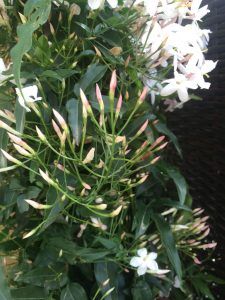 Chinese jasmine stands out for its rapid growth and in different directions, which can create an invasion problem.
Chinese jasmine stands out for its rapid growth and in different directions, which can create an invasion problem.
To avoid this, it is necessary to organize the route frequently while it is developing with pruning.In addition, pruning should be part of the annual care, both for shape and for health.
Of course, it will be necessary to wait until it finishes flowering to execute this process.Flowering may be more numerous by applying phosphorus -based fertilizations, ideal for flowering plants.
The appropriate time is during spring through summer on a quarterly basis or as needed.To enjoy a better condition in the garden, it should be 3 meters from any other plant, so its roots will be better and it will not suffer from theft of nutrients.
What pests and diseases affect Chinese jasmine?
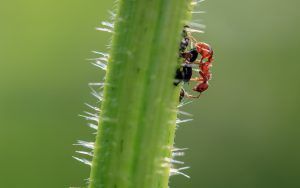 Chinese jasmine is prone to attracting some types of insects that could become pests from its flowers.
Chinese jasmine is prone to attracting some types of insects that could become pests from its flowers.
In this order of ideas we have the aphid and the cochineal which usually feed on the green stems and leaves, absorbing their juices.
Eliminating them is a simple task thanks to the existence of potassium soap. It will only be necessary to wash the plant and they will retire.In the case of diseases, most respond to the settlement of the mycelium of different fungi and their origin is due to high levels of humidity, whether environmental or soil.
Some of the most common are root rot and mildew and they have favorable treatment if their negative effects are detected in time.Chinese jasmine is positively valued within the plant world for its beauty and usefulness.
However, to achieve its maximum value, it is not enough just to apply common planting strategies, you have to adapt the exact ones for your type.




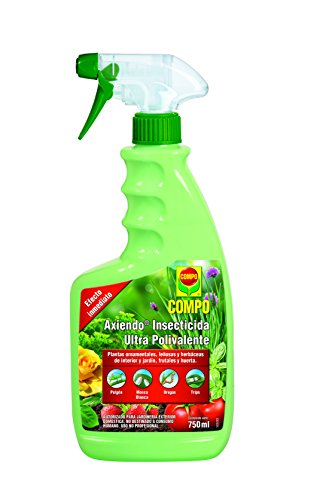

![Photo of Acerola: [Cultivation, Irrigation, Care, Pests and Diseases]](https://www.complete-gardening.com/wp-content/uploads/2022/08/acerola-cultivation-irrigation-care-pests-and-diseases-390x220.jpg)
